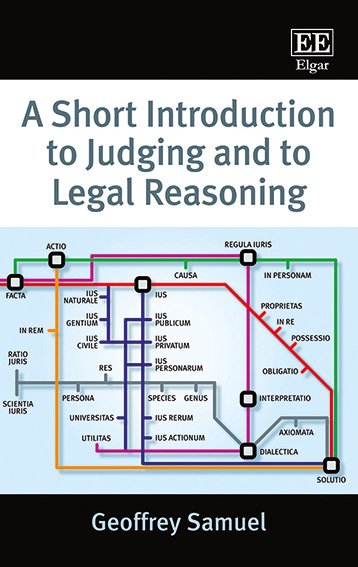A new book authored by Kent Law School Professor Geoffrey Samuel examines judging and legal reasoning in a concise format accessible to law students and researchers at all stages of their studies.
Taking three distinct perspectives, A Short Introduction to Judging and to Legal Reasoning (published this month by Edward Elgar) considers what legal reasoning has been; what legal reasoning is from the view of judges and jurists; and what legal reasoning is from the view of a social science epistemologist or humanities specialist.
Professor Samuel begins by identifying the main institutional focal points of legal reasoning (ius, regula iuris, Interpretatio, utilitas and actiones). While examining legal reasoning from both an internal and external viewpoint, the book simultaneously incorporates theory and scholarship from a range of other disciplines including social science and film studies. It also includes a discussion of fiction theory, schemes of intelligibility, and other epistemological issues as well as standard reasoning devices such as induction, deduction and analogy.
Professor Samuel is Co-Director of the Kent Centre for European and Comparative Law and is a specialist in comparative law. He is a visiting professor at universities across France and Europe and is currently Professor affilié at the École de droit, Sciences-Po in Paris.
As well as teaching undergraduate and postgraduate students at Kent Law School, he is also a member of the Editorial Board of the Journal of Comparative Law. He has published many book chapters and articles in the fields of comparative law and legal reasoning with his most recent books including Rethinking Legal Reasoning (2016, Edward Elgar) and An Introduction to Comparative Law Theory and Method (2014, Hart Publishing).
In a review of the book, Professor Pascal Pichonnaz from the University of Fribourg in Switzerland says: ‘Geoffrey Samuel’s unique ability to teach and understand both French law and continental perspectives, as well as English law, allows him to give invaluable insight on legal methodology both for English and civil law lawyers. This book is the result of a large historical and methodological knowledge, of a deep understanding of decision-making processes and of a tremendous work with cases. Just remarkable!’

